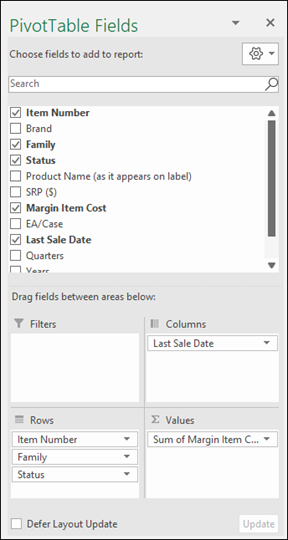Create a Pivot Table to analyze worksheet data
A Pivot Table is a powerful tool to calculate, summarize, and analyze data that lets you see comparisons, patterns, and trends in your data.
Pivot Tables work a little bit differently depending on what platform you are using to run Excel.
https://www.microsoft.com/en-us/videoplayer/embed/RWfyHX?pid=ocpVideo0-innerdiv-oneplayer&postJsllMsg=true&maskLevel=20&market=en-us
Create a PivotTable to analyze worksheet data
A PivotTable is a powerful tool to calculate, summarize, and analyze data that lets you see comparisons, patterns, and trends in your data.
PivotTables work a little bit differently depending on what platform you are using to run Excel.
Create a PivotTable in Excel for Windows
Select the cells you want to create a PivotTable from.
Note: Your data shouldn't have any empty rows or columns. It must have only a single-row heading.
Select Insert > PivotTable.

Under Choose the data that you want to analyze, select Select a table or range.

In Table/Range, verify the cell range.
Under Choose where you want the PivotTable report to be placed, select New worksheet to place the PivotTable in a new worksheet or Existing worksheet and then select the location you want the PivotTable to appear.
Select OK.
Building out your PivotTable
To add a field to your PivotTable, select the field name checkbox in the PivotTables Fields pane.
Note: Selected fields are added to their default areas: non-numeric fields are added to Rows, date and time hierarchies are added to Columns, and numeric fields are added to Values.

To move a field from one area to another, drag the field to the target area.
Very important
ReplyDelete